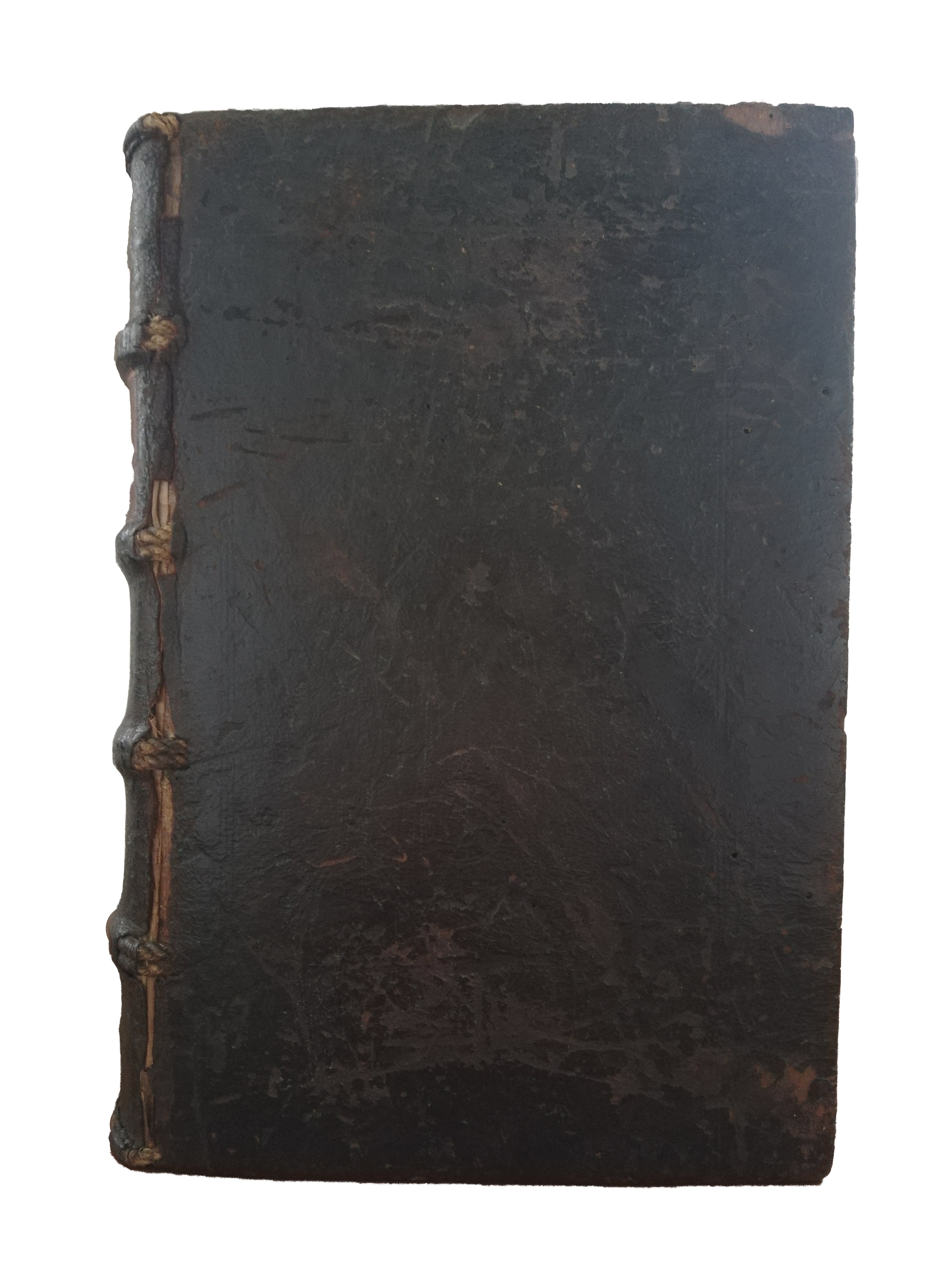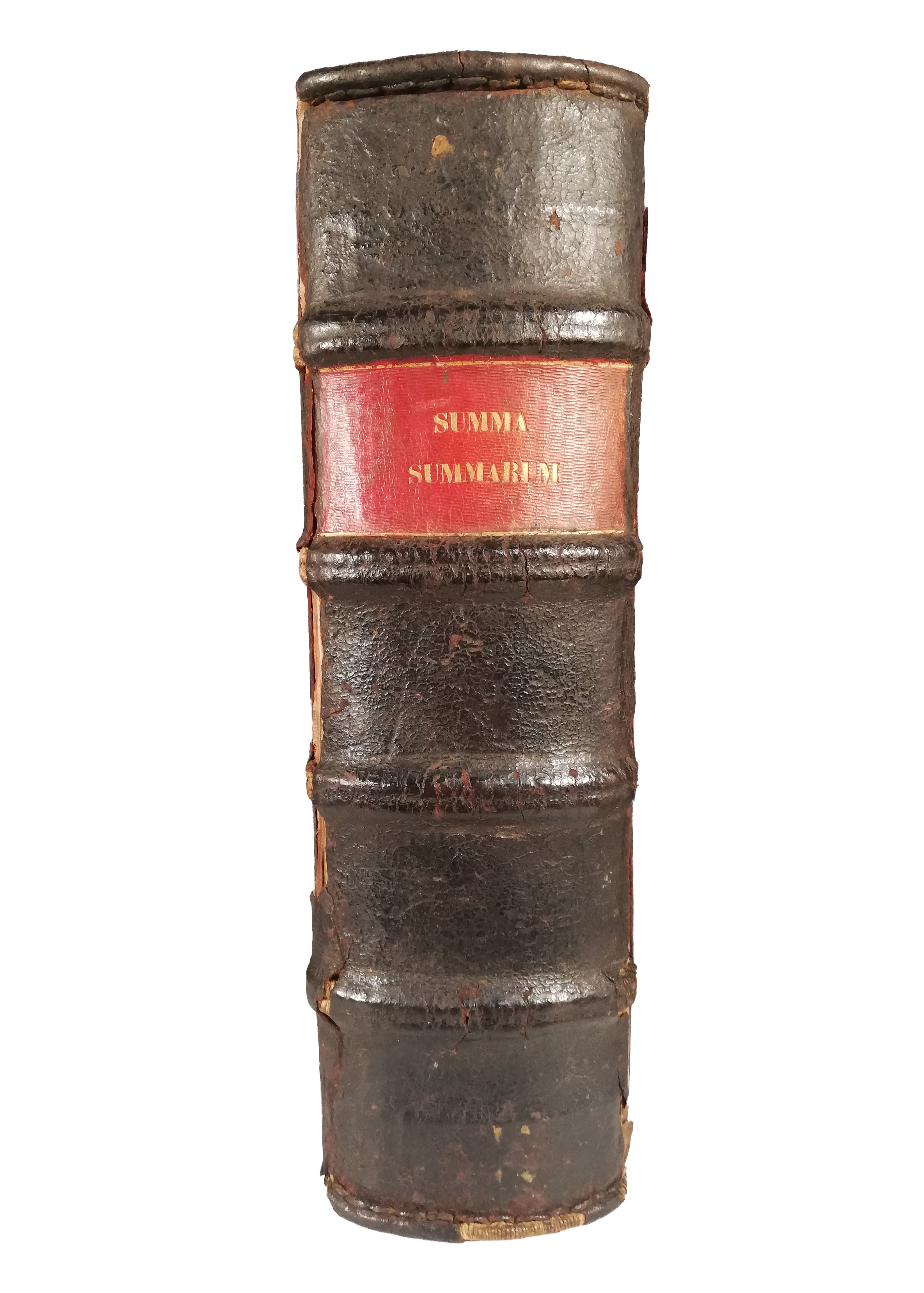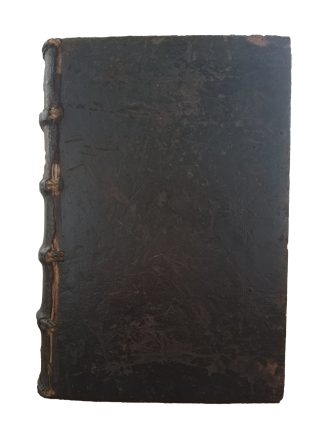MAZZOLINI DA PRIEIRO, Silvestro.
CONTEMPORARY ANNOTATIONS WITH REFERENCES TO LUTHER
Summa summarum
Strasbourg, J. Brieningerm, 1518£2,500.00
Folio. ff. CCCCLXXX (viii) + 2 tipped-in C16 leaves, one blank, one with extensive contemporary mss. Gothic letter, double column. T-p in red and black within decorated woodcut border with putti and grotesques, woodcut border with mainly vegetal decorations, woodcut vignette of Pope Sylvester (?) to a 8 , 4 half-page or smaller woodcuts with arbor consanguinitatis, decorated initials. T-p marginally a little finger-soiled, slight offsetting from C15 ms. formerly used as ffep, occasional light water stain to upper or lower outer blank corner, a few marginal flaws and tears, small ink burns to mm 3-6 (last repaired) affecting a few words, two old repairs to blank verso of last. A very good, well-margined copy, on thick paper, in contemporary Flemish calf over wooden boards, lacking clasps, later but not modern eps, triple blind ruled to a cross-hatched design with large rosettes and fleurons in blind, worn, raised bands, a.e.r., joints cracked but firm, small loss at foot of spine and to outer edge of lower board. C19 bookplates of the Library of the Xavier Union and the Catholic Club to front pastedown, C17 inscription ‘Crucis. Conve. S. Agathae p[ro]p[ter] Cuik’, numerous C16 annotations.
A handsome copy, in its original Flemish binding, of this most important legal work. Silvestro Mazzolini da Prierio (or Prierias, 1456/7-1527) was a Dominican theologian, professor at Bologna, Pavia and Rome, and Master of the Sacred Palace from 1511, by request of Julius II. He is renowned for being the first Catholic theologian to publish a critique—based on the Indulgences section of his ‘Summa’—on Luther’s theses on papal authority in 1519 (Tavuzzi, ‘Luther’s Catholic Opponents’, 224). Among his wide-ranging works, including astronomy and demonology, ‘Summa summarum’, or ‘Summa Sylvestrina’, was the most successful. First published in 1514, it was reprinted over 50 times. It is an alphabetic compendium of varied theological and legal questions, spanning sacraments, adultery, divorce, holy water, natural and illegitimate children, murder, heresy, bigamy, ban for clerics to fight in war, juridical issues (e.g., accusation and oaths), and alchemy, reaffirming Catholic beliefs. The near contemporary annotator noted this in his glosses to the Eucharist section, mentioning the Lutheran position (officially formulated in 1536), based on Mark 14 and Luke 22, that the body and blood of Christ are truly present in the consecrated bread and wine. More generally, he highlighted—adding notes from authorities like Gregory IX’s ‘Decretals’, and ‘updates’ from the Lateran Council V (1512-17)—questions involving criminal law (e.g., if people accused and condemned to execution can defend themselves), canon law (e.g., ecclesiastical benefices, elections, excommunication, masses, burials, simony, superstition), and practical questions such as the materials allowed for the making of chalices (i.e., not prone to rusting or fragility), and that ‘altars should not be made of wood or earth, but of stone’, which he glossed with explanations, also on decorations allowed, with references to the Old Testament. He added glosses on the confessions of condemned criminals, on the scaffold and at the stake. In the C17, this copy was in the library of the monastery of the Augustinians of the Order of the Holy Cross in Cuik, North Brabant. Its wealthy library, with over 1400 books including mss and incunabula, was dispersed after Napoleon’s suppression of religion orders in 1812 (Hermans, ‘Annales’, 172). Rare.
Only Cornell and Chicago copies recorded in the US.Not in BL STC Ger., USTC or Graesse. G.C. Hermans, Annales canonicorum regulatium S. Augustini (s-Hertogenbosch, 1858), I; M. Tavuzzi, ‘Luther’s Catholic Opponents’, in Martin Luther in Context (Cambridge, 2018), 224-31.In stock









